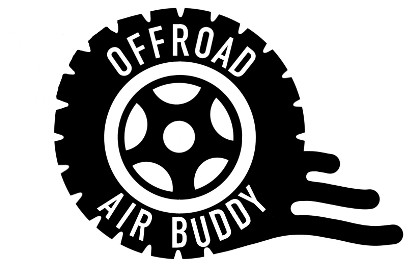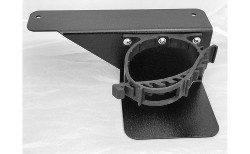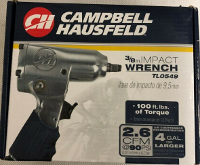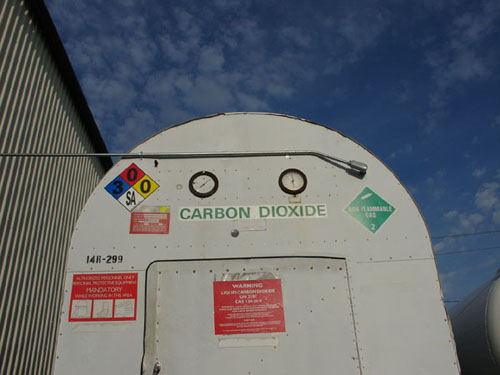
Total Air Up System
(mon-fri 8am-4pm)

First a little education and a mild warning:
CO2 is an odorless, tasteless gas that is heavier than air. It has no natural liquid state at standard atmospheric pressures on this planet. At -109 F it will freeze into a solid (dry ice), and at anything above that temperature, it will sublimate directly into a gas. Inside your tank, because it's under pressure, it will be in a liquid state. At 72 degrees F, your tank will have approximately 750 PSI inside. As the temperature rises, so does the pressure. at 130-140 degrees, the pressure in your tank will reach or exceed 3,000 PSI and the safety disk on the valve of your tank will pop (sounds like a gunshot), and then all the co2 will be released through that safety cap. NEVER EVER do anything to interfere with the safety, though!! Without the safety, if your pressure built up over 6,000 PSI the whole tank could explode like a large grenade, that's probably why it's called a "Safety!"
The moral of this story is to be aware of temperature. In the summer, try to keep a window cracked or park in the shade so the interior of your vehicle does not exceed 130F at any time, or 115F for extended periods of time. Also, we can slightly under-fill your tank to give you a little extra expansion room so that you have a larger safety margin if you expect to be in the heat.
I drive a Black Jeep, and my steel tank is painted black as well. I fill mine all the way up, even the summer, and I never worry about it building up too much pressure. My windows are tinted, I usually leave a window slightly cracked and when it's 110 degrees in Houston, my interior is only 125. The pressure in my tank is 2200 PSI, and that only happens if my tank happens to be completely, 100%, all the way full at the time.
How do I adjust the pressure?
To adjust your regulator pull out on the plastic knob (red in the picture), and then turn to the right (clockwise) to increase pressure. Turn left to decrease. When you get to the right pressure, push the red know IN to lock it in place. Some regulators will have an Adjustment screw in place of the red plastic bonnet in the picture to the right. This adjustment screw usually has a locking nut near the base of the screw, by the regulator's body. To adjust this type, first loosen the locking nut, if needed, then turn the screw to the right (clockwise) to increase pressure.
How do I know when it's getting empty?
The short answer is to weigh it. There's an empty (TW=Tare Weight) weight printed on the shoulder of the cylinder. If you have a 5 lb aluminum cylinder, it's empty weight is going to be about 7.8lbs. If you get that cylinder filled up here, at Carbonics, we will put 4-4.5 lbs of liquid CO2 in your cylinder. (We'll put 5 lbs if you talk to Sam or Chrisy first) So your full weight would be 12-13 lbs. If you put your cylinder on a scale, you can see how close to your empty weight it is getting. If you see the regulator gauge beginning to slide into the RED part of the gauge, then you are almost empty already!
What about that gauge on the left, with the red and green?
That gauge shows the current pressure of the gas coming from the cylinder. Whether the cylinder is full, half, or almost empty it will still have 750 PSI at 72 degrees Fahrenheit. It's not like a gas-gauge, it only shows pressure, not volume.
How many times can I fill up my tires?
Obviously that depends on your tire size and what pressure you air down to and what pressure you air back up to. Using my own 10lb tank that I carry, I can fill all 4 of my 35" MT's from 16 psi to 28 psi 10 times!! However, if I try to go from 12 psi to 30 psi I can only get all 4 tires 8 times!!

How does the utility Shelf work?
click here for a couple of more pictures
This shelf uses the pre-existing bolts on a 4-door JKU or on an LJ to secure itself to the side rail. Seems sturdy enough for 5lbs tanks or smaller. For 10lb tanks it will require a little ingenuity to brace it against the sidewall. *I put a door-stop behind mine and that worked perfectly.

Air Tools
We encourage you to purchase your own Air-Tools. At 90 PSI your
Air Buddy System will supply roughly 9 SCFM. This is enough to run
all but the largest of Industrial Air Tools. With a little
experimentation you can usually adjust the pressure down and play
with the power setting on your Air Tool to get the power your want
for a given task. It's always more accurate to use a Torque
Wrench. The more experience you have, the more likely you can run
a more powerful tool, safely, so we could not pick an impact
wrench that would be right for everyone.
*Don't
forget to carry air tool oil for any air tools you add to your
kit!


If you're near South Houston, just come on by our facility
506 Nebraska St, South Houston, TX 77587
We'll be happy to fill your co2 cylinder up while you wait. It will only take a few minutes. We fill by weight with actual liquid CO2, so your tank gets completely full.
713-944-7900



